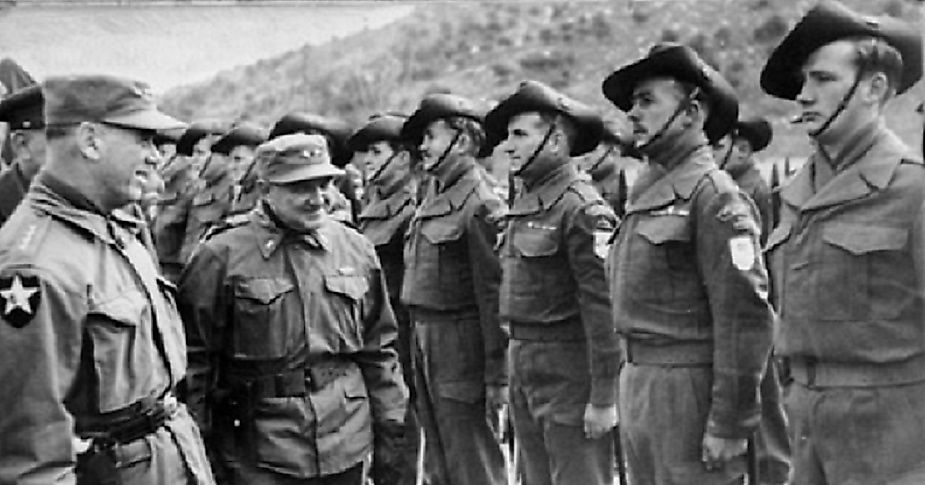Battle Of Kapyong - Korean War

5. Background
The Battle of Kapyong started on the 23rd of April, 1951 and lasted for two days in the Valley of the Kapyong River. This area is approximately sixty kilometers northeast of Seoul, South Korea. It took place during the Korean War, the first major ‘hot war’ event of the ‘Cold War’ era, that that took place from 1950 to 1953 on the Korean Peninsula. The Communist North Korean state instigated the events by invading South Korea. In their verge to conquer all of the peninsula, the United Nations’ forces intervened to put an end to their objectives. For this reason, fellow Communist China’s military launched a campaign against United Nations’ forces, and they destroyed the 6th South Korea Division northeast of Seoul, making way for what would become the Battle of Kapyong.
4. Makeup
The retreating Northern Korean and Chinese forces from Korea War regrouped and counterattacked in the west-central and western sectors of the front. They were able to overwhelm the South Korean troops in the Kapyong Valley, who hurriedly felt back. The UN forces, primarily comprised by Australian and Canadian personnel, were ordered to go and secure the Kapyong River Valley. The 27th British Commonwealth Brigade went and blocked the Kapyong Valley route that headed to the capital city. The two forward battalions in the brigade were the 3RAR (3rd Battalion Royal Australian Regiment) led by Ian Ferguson that occupied the right side of the height overlooking the area, and the 2PPCLI (2nd Princess Patricia's Canadian Light Infantry) led by James Stone holding the left side. Assisting them was the United Kingdom’s Middlesex Regiment and 27th Infantry Brigade led by Brian Burke, the South Korean 6th Division, Royal Regiment of New Zealand Artillery, and the U.S. 5 th Calvary Regiment. This UN force was composed by 2,800 men was fighting against the Chinese. Wen Yuchen and Deng Yue led the Chinese 118th Division and its approximately 10,600 men.
3. Description
The UN force needed to keep a long front in order to block the Kapyong route. Both the battalion Princess Patricia's Canadian Light Infantry and the 3rd Battalion Royal Australian Regiment decided to deploy an all-around defense some meter away from each other since a continuous line was not possible. Each group then fought its small battle. The hilly terrain rough terrain limited the interlocking of fire between the groups to support each other. However, each platoon supported each other by battalion mortars and machine guns along with a New Zealand artillery regiment.
2. Outcome
The Canadian and Australians forces plus the support of the New Zealand artillery regiment had a night of the fierce fight and a full daylight fight with the Chinese force that made the Chinese to withdraw eventually after dark. Despite the UN force being heavily outnumbered, they managed to put off the Chinese attack. Thus, the braveness of the Canadian and Australian troops prevented the fall of the Seoul city to the hands of Chinese. They made this achievement with the Australian losing thirty-two men, fifty-nine wounded and three of them captured whereas the Canadians lost ten men and twenty-three wounded. The Chinese called off their effort to break through to Kapyong on the 25th of April after losing over 2,000 men in the battle.
1. Significance
The Battle of Kapyong marks a significant episode in the Korean War. The soldiers of the Princess Patricia's Canadian Light Infantry and 3rd Battalion Royal Australian Regiment are preserved in the face of great adversity for helping to prevent a potentially costly defeat for United Nations (UN) Force and South Korean. This success by the Canadians and Australians allowed the UN forces to unite their troops for future operations. A week later, the wider Communist offensive of 1951 was terminated after which the Korean conflict become a war of enemy harassment and patrols rather than large-scale attacks mostly. The American government gave United States' Presidential Unit Citations to both the Australians and Canadians, which marked the first such honor awarded to a Canadian unit.
In the late 1970s and early 1980s, the Gapyeong Canada Monument was created near Naechon, Gapyeong County, South Korea. At the site, the South Korean and Canadian flags fly side by side over a plaque and memorial garden, placed in honor of the 26,791 Canadians who served in the Korean War, and the 7,000 Canadians who stood guard in the country in the years following the ceasefire.











